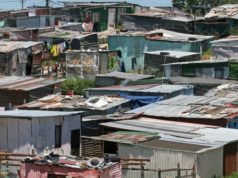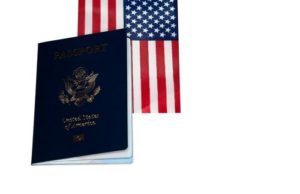
Displaced Persons Refugees: Who Are They?
The world is currently experiencing the worst refugee crisis since World War II, with millions of people forced to leave their homes due to conflicts, persecution, and natural disasters. Among these refugees are Displaced Persons (DPs), a term typically used after World War II to refer to those who were forced to leave their homes during the war.
Who are Displaced Persons Refugees?
DPs are individuals who have been displaced from their homes, but have not yet crossed an international border. They are considered refugees because they have been forced to leave their homes due to conflict, persecution, or other reasons. Unlike refugees, who are protected under international law, DPs often lack legal status and the protection that comes with it.
Causes of Displacement
Displacement can occur for a variety of reasons, including armed conflict, human rights violations, environmental disasters, and economic instability. For example, in Syria, ongoing conflict has forced millions of people to leave their homes, while in Myanmar, persecution against the Rohingya people has led to mass displacement.
Challenges Faced by DPs
DPs face a number of challenges, including limited access to food, water, healthcare, and education. They may also face discrimination, violence, and exploitation. Because they lack legal status, they may be at risk of deportation or denied access to basic human rights and services.
International Response
The international community has a responsibility to support DPs and provide assistance to those in need. The United Nations has established guidelines for the treatment of DPs and works with governments to provide humanitarian aid and protection. Non-governmental organizations (NGOs) also play a critical role in providing assistance to DPs.
Conclusion
Displaced Persons Refugees are individuals who have been forced to leave their homes due to conflict, persecution, or other reasons, but have not yet crossed an international border. They face a multitude of challenges and lack legal status, making them vulnerable to exploitation and discrimination. The international community has a responsibility to support DPs and provide them with assistance and protection.
Refugees are those individuals who flee their land of origin to embark upon a new land for the promise of a new start and a better way of living. Refugees should not be confused with the term, illegal immigrants residency asylum immigrants
The U.S. hosted more refugees that came out of World War II than any other country. Since 1980, more than 2 million refugees have relocated themselves to America. A large percentage of the global number of refugees are under the care of the UNCHRCauses for displaced persons
The causes for displaced persons throughout the modern world are multifaceted and sometimes disconnected. As a global issue, the United Nations sparked one of the first movements for widespread international action to assist refugees. World War II caused the biggest global realization for aiding the growing issues presented by forced migration and general refugee movements. Since this time, rapid decolonization and globalized political strife have added to the number of refugees. Another central cause for displaced persons stems from natural disaster
Understandably, large scale movements of people send reverberations throughout much of the world. At times, these movements are based in socioeconomic, racial, and ethnic groups that conflict with other nations causing widespread conflict. Nations that already face large amounts of poverty are often forced to ration supplies to a new refugee population causing political unrest between groups.
Beyond the economic concerns presented by refugees, other racially-based problems arise as well. Many nations that surround a nation which has experienced a disaster become the first destination for fleeing refugees. This flight can complicate already pressing issues between nations and cultures.
The United Nations’ High Commissioner for Refugees The UHCR is the United Nations’ High Commissioner for Refugees was established on December 14, 1950 by the UN General Assembly. The creation of the group was intended to lead and organize how to help and protect refugees worldwide. The first order of business was to ensure protection of the rights and well-being of international refugees. The UHCR worked to also make sure that all refugees would have the right to seek asylum and find a home in another nation, along with the option of relocating to their country of origin or wherever they desired. The UHCR also has the capability to help stateless people find shelter and food until they have the option or means to relocate and start anew in a new country.
For 50 years, the UNHCR has salvaged tens of millions of lives and repatriated and reunified people to their respective countries of origin and families. The UNHCR currently employs around 6,600 people in over 110 countries with about 34 million people to assist. The United Nations’ High Commissioner for Refugees has been globally acclaimed, winning a Nobel Peace Prize for its ground-breaking role in aiding European refugees, and has increased their budget from $300,000 to more than $2 billion as of 2009.
Though sometimes refugee status is only conferred nominally by the media and the public for those who have been forcibly removed their homes, frequently, the circumstances that remove a person or persons from their country of origin are so traumatic and devastating that the victims may be able to gain at least temporary protected status to give them time or resources to move on with their lives. Even if they are not being persecuted by a government or social group, “natural disaster refugees” are such a subgroup that conflict with international standards for refugeeism but are still refugees due to their displacement.
As regards to an official designation of Temporary Protected Status, discussions of whether or not to confer this privilege upon victims was a major debate following the 2010 earthquake in Haiti that killed hundreds of thousands and leveled the capital city of Port-au-Prince.
Other earthquake-related natural disasters also served to create unique solutions for solving refugee problems for the municipalities and countries affected. The Indian Ocean tsunami from an undersea earthquake in 2005 spurred changes in American policy regarding caps on asylum seekers and refugees.
Fires in San Francisco following the 1906 earthquake that destroyed more than three quarters of the city led U.S. Armed Forces to build special refugee housing. As the latter class of refugees demonstrates, “refugees” can be internally displaced. Hurricane Katrina evacuees were made refugees by the flooding of the levees of New Orleans, and residents of Love Canal were given federal money to relocate due to emergency-level chemical contamination of the site.
What to legally do with some refugees, on an international level, however, may cause more conflicts than solutions. For example, the Vargas mudslides of 1999 were marked by fervent attempts of Venezuelan president Hugo Chávez to keep citizens in the country and outright refusals of American humanitarian aid. Meanwhile, following the increase Irish emigration in the wake of the Great Irish Famine, the United States discouraged immigration by enacting nationality quotas
Refugee law, specifically, addresses the rights and statuses of refugees, and is thus focused on protecting the victims of a refugee situation. Refugee law is effected by United Nations conventions and resolutions. The Geneva Convention of 1951 and later corollary protocols formally define a refugee in actionable terms, citing that a person must possess a “well-defined fear” of persecution and bodily harm on the basis of race, religion, social standing or other form of discrimination to warrant protection under foreign jurisdiction.
The Office of the United Nations High Commissioner for Refugees officiates of these policies. However, there is no international court that can officially designate someone as a refugee, and so he or she must apply for refugee status with a particular country. In the United States, both asylum and refugee status are separate legal concepts, and reflect whether the application was filled out domestically or abroad. Legal benefits vary. Domestic refugee policy has seen its ups and downs regarding the exclusivity of offers to foreign applicants.
It was notably restrictive in the immediate post-WWII era toward Jews, apparently a result of anti-Semitic influences, but quotas were since expanded by refugee acts in 1980 and 2005, though more recent expansions of the definition of “terrorism” may yet make it harder for asylum seekers and refugees to successfully gain refuge in the United States. Nevertheless, refugeeism has contributed significantly to the American populace.
The concept of diaspora, perhaps not in name, but at least in practice, has been a reality since the earliest migrations of humankind. Starting with the first movements off of the African continent, individual diasporas took humans from landmass to landmass, shaping much of the world’s modern population.
To some people, however, these willful passages of humans between worlds should not be considered diaspora events, as there is insubstantial evidence that prehistoric forerunners were coerced in any way to relocate out of concern for their safety. By this token, there should be some element of refugeeism as justification for leaving one’s homeland, and furthermore, this new territory should have the potential to be another place of permanent residence. Several major diasporas are commonly referred to by historians, most notably the Diaspora, which represents the affected Jews who were ousted from the kingdoms of Israel and Judea, and the African diaspora, which originated with the development of the colonial slave trade.
Even so, the term “diaspora” can also be utilized for populations of particular nationalities, such as Irish emigrations in the wake of the Great Famine. Moreover, with growing numbers of refugees in the world from continuing conflicts and changing environmental circumstances, allusions to diasporas may yet expand exponentially.






















